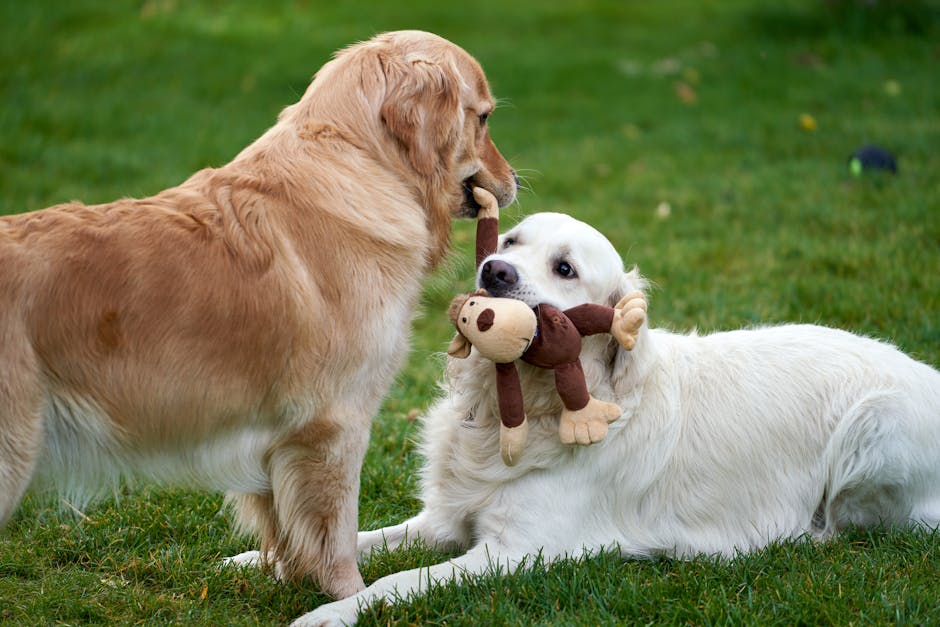
There’s a common worry that nags at most dog parents when they head out the door for work: what is my fur-baby doing right now? Are they happy? Bored? Destructive? It’s a real challenge to balance our lives with ensuring our companions maintain good dog behavior and mental stimulation throughout the day. One dog owner recently shared a brilliant, simple hack that sparked a lively conversation, reminding us that sometimes the best solutions for entertaining dogs while away are hiding in plain sight, or perhaps, require a shift in perspective on our pups’ alone time.
Creative Solutions for Alone Time
Interactive Toys & Puzzles
This particular owner found a fantastic fix for their restless dog: a self-rolling ball. They raved about how this interactive toy kept their dog “chasing and playing for hours,” helping to burn energy and stay active. “It’s also fun to watch him figure out how to catch it!” they added, highlighting the mental engagement these toys offer. For indoor dogs, especially, these kinds of interactive gadgets can truly be a game-changer, offering a much-needed outlet for their playful instincts.
Of course, the community jumped in with their own clever strategies. One popular idea, earning a couple of votes, focused on low-calorie, long-lasting distractions. Think frozen Kongs stuffed with food or a frozen lick mat. The beauty of these, as one person pointed out, is that they offer extended engagement without supervision becoming a safety concern. It’s about giving them a job that keeps them busy and content without putting them in danger.
Another fan raved about treat-dispensing toys, adding their own twist: tying ropes around them. This isn’t about making it overly complicated, but just enough to encourage a bit more effort and problem-solving. It’s a smart way to amp up the mental workout, turning a simple treat into a mini-quest for your dog.

Rethinking Dog Behavior During Alone Time
However, a truly insightful comment offered a different, thought-provoking angle on dog behavior during alone time. This person argued that expecting our dogs to entertain themselves constantly when we’re gone might actually be counterproductive. They suggested that if dogs are “taught to expect something to entertain them even when their human isn’t home, they can sometimes find it hard to learn how to settle appropriately.” It’s a compelling point: nothing truly compares to human interaction, and an interactive toy, no matter how clever, might only amp up a dog’s energy levels for a short while, leading to more restlessness when the novelty wears off.
Instead, this perspective advocates for a clearer distinction: alone time is for snoozing and relaxing, while fun and engagement happen when you’re actually present. Meeting all of your dog’s physical and mental exercise needs before you leave, and teaching them how to settle down, can lead to a much calmer, more relaxed dog during your absence. It’s less about constant entertainment and more about setting healthy boundaries for their dog behavior patterns.
Simple Pleasures: The Window View
And for the dog who simply loves a good view, one owner shared their simple, yet effective, solution: a table by the window. “It’s his spot. Keeps him stimulated. He just sits and watches everything.” It’s a reminder that sometimes the simplest things can provide immense enrichment, appealing to a dog’s natural curiosity and observation skills.
Ultimately, there’s no one-size-fits-all answer to keeping our dogs happy while we’re away. What works for one pup might not for another, and understanding your individual dog’s behavior is key. Whether it’s an interactive toy, a frozen treat puzzle, a prime window-watching spot, or a more intentional approach to training for alone time, these shared experiences offer a wealth of ideas for ensuring our furry family members thrive, even when we can’t be right there with them.